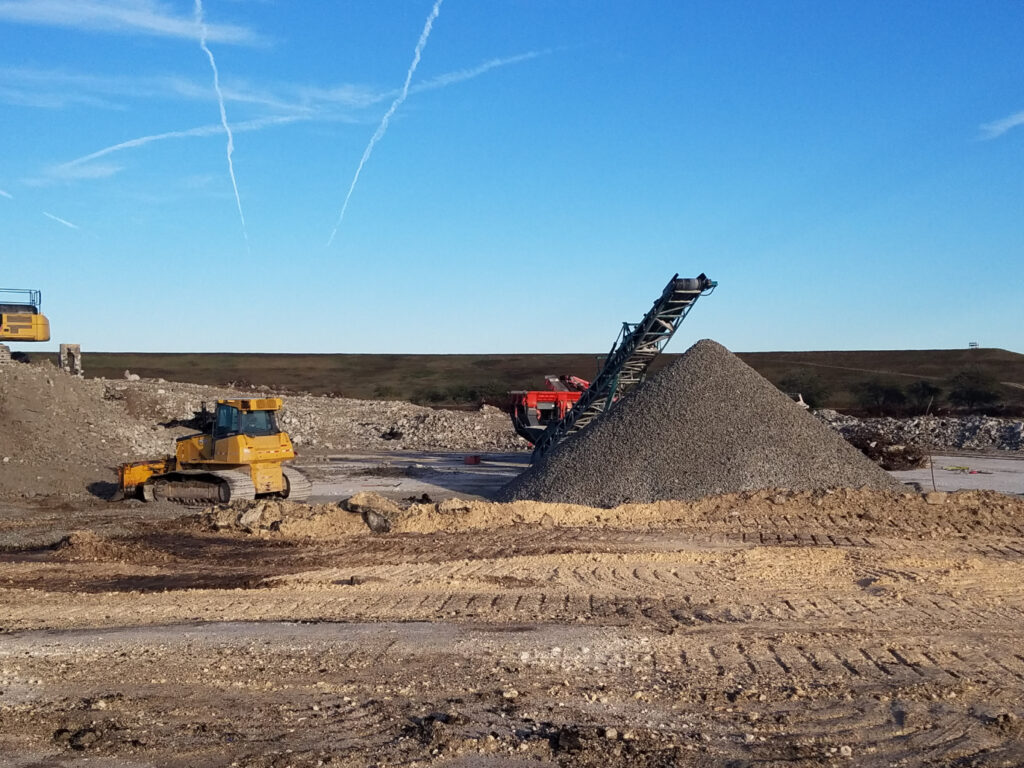
Environmental remediation is an intrinsic element of the industrial demolition process, as well as a bucket term for the remediative work we conduct as part of a demolition, But what exactly is it?
Simply put, environmental remediation is the removal of regulated, hazardous or potentially hazardous, and contaminating substances from a job site in a manner which minimizes the amount of hazardous and regulated waste produced, while protecting our workers, the public, and the environment from the risks posed from these substances.
The Resource Conservation and Recovery Act (RCRA), enacted in 1976, is the principal federal law in the United States governing the disposal of solid waste and hazardous waste. RCRA regulates hazardous waste as an expansive number of listed wastes, hazardous and toxic wastes, and wastes that exhibit characteristics of hazardous waste. Hazardous waste may not be diluted or mixed with other waste in order to ensure the resulting waste is non-hazardous. RCRA regulations require all waste that is derived from hazardous waste, and all waste that contains hazardous waste, to be disposed of as hazardous waste as well.
Aside from the potentially devastating health and environmental impacts, the implications for failing to remove all regulated and hazardous waste prior to demolition for separate disposal could potentially cause all of the demolition debris to be managed and disposed of as regulated or hazardous waste.
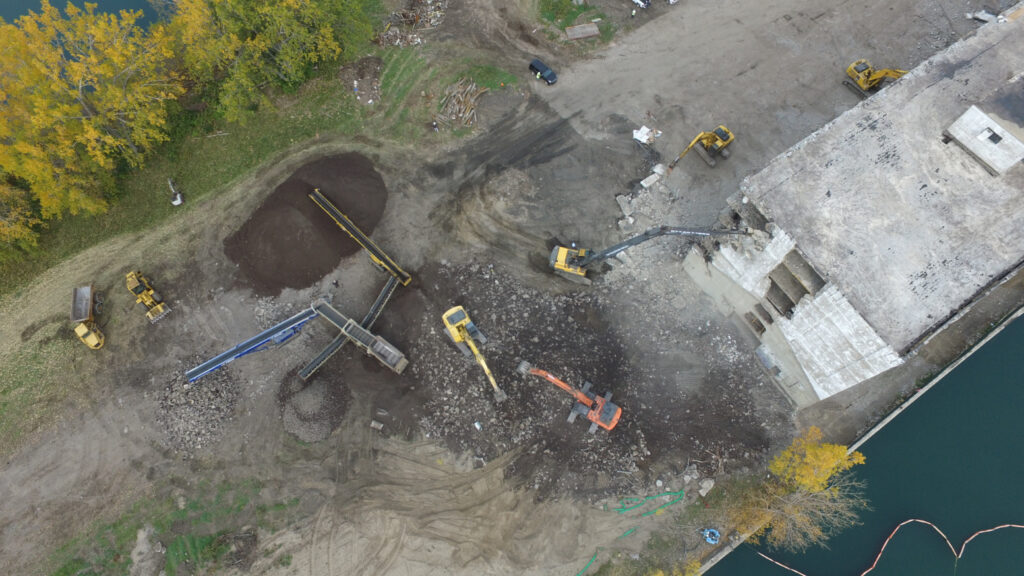
What are the most common environmental remediation substances?
The most common of these substances is what is known as “Universal Waste”, a fitting term adopted by the regulations because of the nearly universal presence of these items in almost all facilities. Universal waste is in fact hazardous waste that is permitted to be managed differently from other hazardous wastes, and includes items like fluorescent light bulbs, ballasts, mercury switches, smoke detectors, and lead batteries which are virtually everywhere. Universal wastes are managed differently from other hazardous wastes because much of the hazardous substances contained in these items can be captured through a recycling process or eliminated through incineration.
Asbestos was used in the manufacturing of a wide variety of building materials from 1858 until 1970 when the Clean Air Act allowed the Environmental Protection Agency to regulate asbestos as a hazardous air pollutant. Many people assume that asbestos is banned in the United States, but it is still legally used in some manufactured products to this day. Given the widespread use of asbestos for nearly two centuries, all structures must undergo a thorough asbestos inspection before they can be demolished. Federal standards require, at a minimum, the removal of regulated asbestos-containing materials prior to any demolition or renovation. More stringent rules exist under many state regulations for the removal of asbestos, and vary from state to state.
Polychlorinated Biphenyls (PCBs) are commonly found in many electrical components in the form of dielectric fluids such as light ballasts, capacitors, and transformers. PCBs were also commonly used as an additive in window and expansion joints and weatherproofing caulks/sealants and can sometimes be found in paints or other industrial coatings. PCBs were used in manufacturing from 1929 until they were banned in 1979, and any facility constructed between those years will be of the highest concern for the presence of PCBs, although many items are automatically considered to be PCB-containing unless labeled or proven otherwise, regardless of when it was constructed or manufactured. PCB containing materials are considered hazardous waste at PCB concentrations as low as 50 parts per million.
Lead paint is another common substance requiring remediation prior to demolition, particularly if the paint is loose or peeling. Lead paint is potentially hazardous waste depending on the lead concentration and the ability of the lead to leach into soils and waters. At a minimum, loose and peeling lead paint should be removed and disposed of according to its lead concentration to prevent contamination of other demolition debris and leaching into soils in the demolition area.
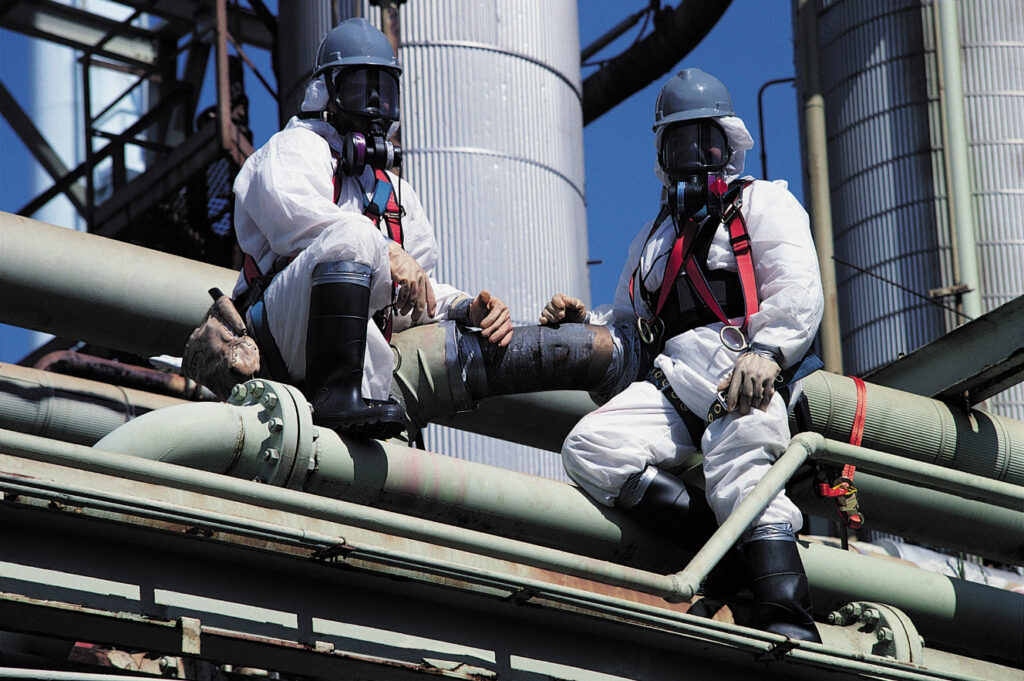
What are the most common environmental remediation questions?
Typically, facility owners are very aware of the types of hazardous and regulated materials on their site, as well as historical details such as how they’ve been used, how long they’ve been present, why they’re there, etc. In some cases, however, a facility has been closed for a number of years and records may have been lost or destroyed.
The most common question owners have concerns how to identify unknown regulated and hazardous materials that may present, and how to mitigate risk of additional hazardous and regulated materials being discovered after the fact.
In all cases, an owner should hire an experienced Environmental Consulting Firm to perform a thorough inspection of the facility for hazardous and regulated materials. Hazardous waste regulations require storage and disposal recordkeeping, and facility owners should do their due diligence within their organization and its records in order to assist the consulting firm in identifying known hazardous and regulated materials. Any information you can provide the consultant will help mitigate costs. Once known materials are documented, a thorough inspection should follow to identify that which may have been unknown or overlooked.
A quality inspection will manage owner risk, better inform those bidding your project, and provide the owner with a better “apples to apples” comparison of project bids across the board. The thoroughness of the inspection and hazardous/regulated materials identification process will significantly reduce the risk of unanticipated project costs, unexpected comingling of wastes, and most importantly mitigate the chances for an accidental environmental release.
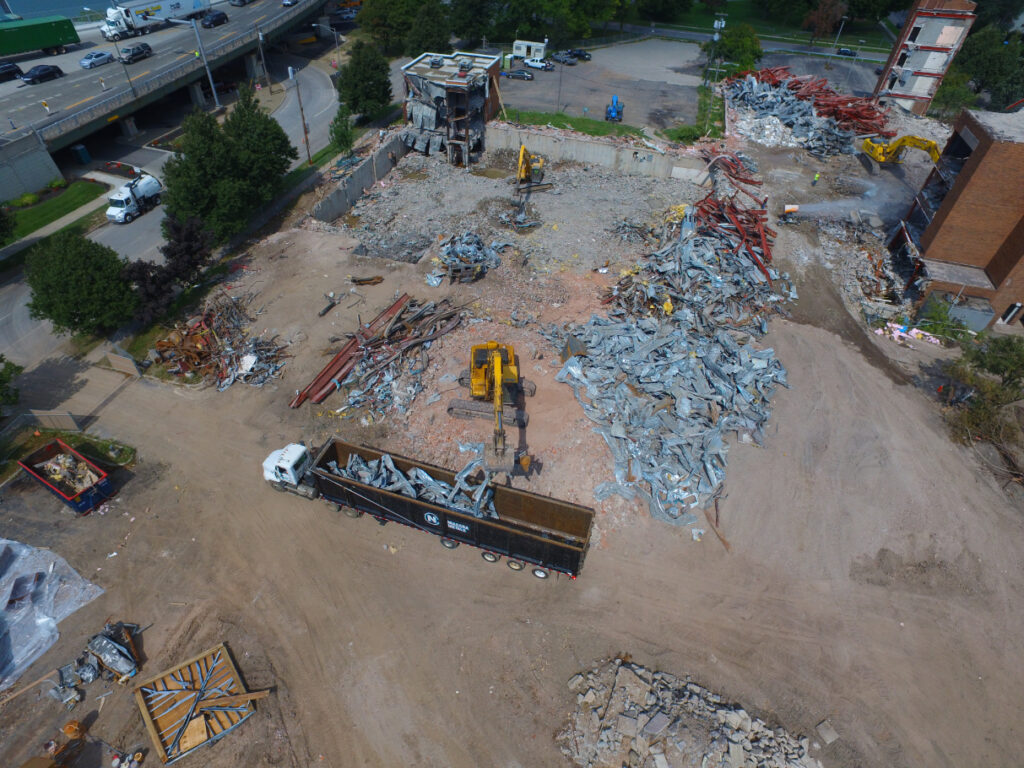
But how are we, the industrial demolition contractors, going to handle these hazardous waste issues, comply with regulations, and protect the workers and the environment?
This is probably the single most important question an owner needs to consider when selecting a contractor. The wide array of potential short-term and long-term liabilities is a far greater consideration than cost or time because a thoughtful, strategic process performed by an experienced team will minimize time and cost to the extent necessary for proper, complete, and compliant removal.
Total Wrecking begins its process by having our environmental experts perform a painstakingly thorough review of all sampling and analysis gathered during inspection, along with all other environmental information and site conditions contained within the project documents. This review allows us to plan for known environmental hazards and strategize about how we will manage, remove, and dispose of them, as well as identify any additional sampling and analysis that must be performed once the work begins.
Our environmental experts then collaborate with the entire team of national demolition and environmental remediation professionals to develop a comprehensive plan for remediation and demolition. This team of collaborators typically consists of the original Project Estimator, a Managing Member, Senior Project Manager, Project Manager, General Superintendent, Superintendent, Corporate Safety Director and on-site safety personnel.
Through this collaborative process, we develop a multi-faceted work plan that takes into account each of the tasks we are going to perform, specific to the hazards and conditions at the project site. We will also determine how we will perform each task within Federal, State, and local regulatory agency requirements; packaging, storage, transportation and disposal requirements; and any project specific requirements of the owner. Value engineering opportunities often present themselves during this collaborative planning phase, and we are able to fully vet and present any cost savings opportunities to the owner.
What are the responsibilities of each project management expert?
The Project Manager will compile and assemble all of the information gained collaboratively and present it back to the team in the form of a formal work plan. Each team member will then review the proposed plan through their own “set of eyes:”
- The Managing Member will have a focus on owner, community risks, and communications, as well as the financial aspects of the project.
- The Senior Project Manager and Project Manager will collectively ensure that all regulatory notification and permitting requirements are accounted for and all project specific requirements are communicated. They’ll also organize the logical progression of the work into a Critical Path Method (CPM) project schedule to ensure the most time-effective plan possible without jeopardizing the safety of any task or person.
- The General Superintendent and Site Superintendent will apply their decades of field experience to the entire sequence of remediation and demolition activities, each focussing on the planned means and methods of carrying out the work.
- The Safety Director will focus on OSHA, EPA, and environmental regulations, and run through a wide array of safety-oriented checking, including industrial hygiene policies, employee training, blood and respiratory medical monitoring, exposure monitoring while work is performed, Community Air Monitoring Program (CAMP), the highest standards of personal protective equipment, and iron-clad community protections.
- The Site Safety Personnel will be geared toward site-specific safety hazards and conditions analysis, ensuring that we have developed Job Safety Analysis (JSAs) for each task that will be performed and an understanding of how those tasks will affect other work taking place during the same timeframes.
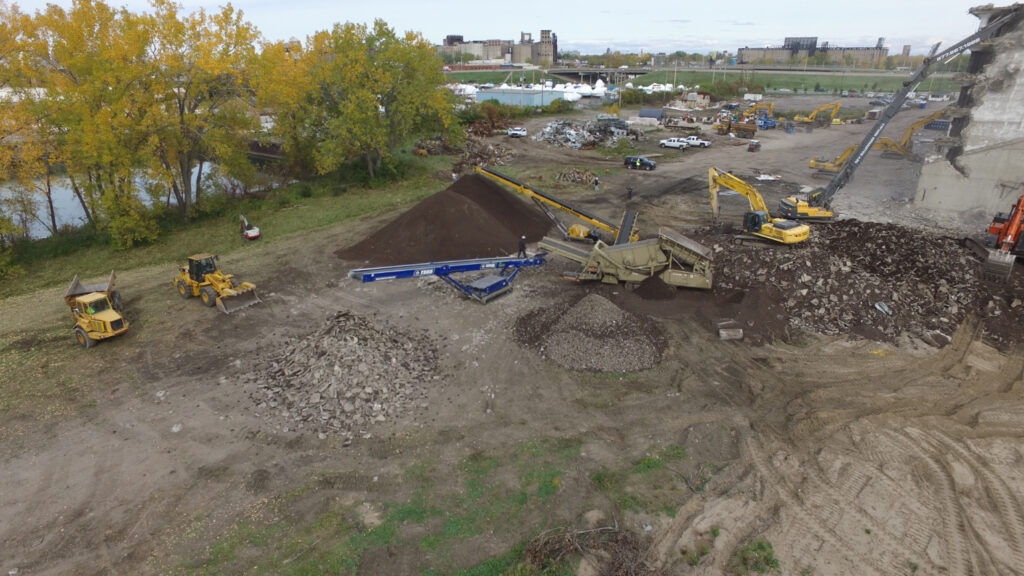
How is hazardous waste material removed without creating more hazards?
In short: an incredibly thoughtful, detailed, battle-tested work plan. A plan that not only ensures that existing hazardous waste won’t be spread but that that waste won’t create new hazards like vapor or particulate emissions while the work is actually being performed. So much of what we do is about working smarter, and there’s no one-size-fits-all environmental remediation approach that suits every job site.
For the safety of everyone involved, it’s absolutely crucial to employ a task-specific work plan that identifies the means and methods that will be utilized to safely and thoroughly complete the work. These work plans, again for the safety of the entire team and community, should be heavily scrutinized and challenged. Total Wrecking’s internal process ensures that we are working smarter through every single task performed.
If there’s a spill or contaminated plot of soil, for example, that needs to be remediated, the work plan should include accommodation for where the soil will be placed when it is removed in order to prevent cross contamination of otherwise clean surfaces. In some circumstances, placing the material in a covered secondary containment with permed edges may be appropriate, while in others it may make more sense to pre-sample and characterize the waste and load directly into the transport truck for immediate disposal. In either case, the Operator should understand the exact limits of excavation, and what happens with the soil before they dig their first bucket.
Even basic, administrative tasks like ensuring disposal materials are properly characterized and manifested prior to removal so that they’re disposed of quickly and safely can be the difference between a bulletproof job site and a hazardous material risk circumstance.
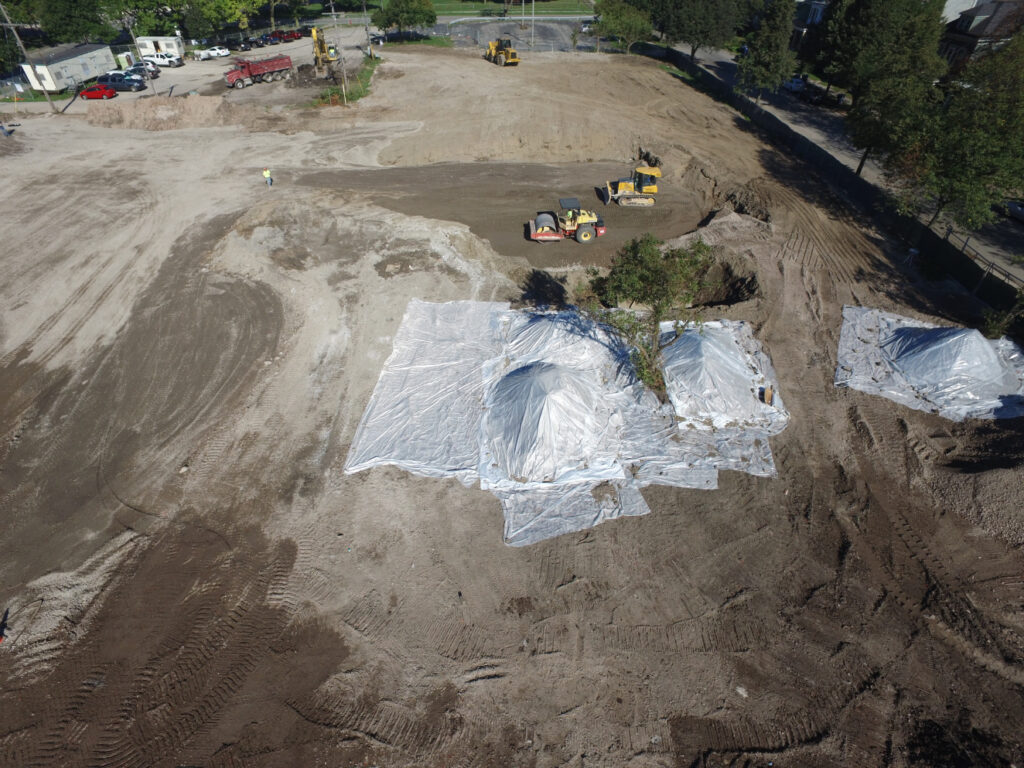
Are the methods being used going to completely remediate the material?
Yes, and that’s exactly why we’re the trusted, certified professionals! We limit every work site as strictly as possible to ensure other contractors present on the site aren’t accidentally exposed.
Touching back on our “work smarter” approach, we also employ a number of controls wherever possible to have a greater command of any potential site variables, like wind direction.
There’s also an extremely important distinction between jobs conducted mechanically or by-hand, an especially important differentiator when it comes to asbestos. Category 1 asbestos, for example, poses very little risk of releasing asbestos, but could become a regulated, cradle-to-grave liability if improperly sanded, ground, cut, or graded.
What sort of record keeping will be provided for the work performed?
Critical to the accountability of any contractor is meticulous and detailed record-keeping. It’s the only way to prove that hazards have been completely remediated, or to specify what elements, if anything, haven’t been completely removed.
There are a suite of standardized documents included in our comprehensive environmental remediation services, such as a waste manifest detailing who handled which specific hazardous material and where it went, all in the interest of creating a chain of custody detailing everyone who handled it.
Separately, we include a detailed record of the history of every waste element we’ve handled, outlining the specific GPS coordinates, soil depths, and samples that substantiate the cleanliness of the soil or material left behind.
To go one layer deeper, we also maintain records of certifications for anyone who handled hazardous materials or were potentially exposed to them to mitigate any future liability.
This is all on top of industry standard documents like the regulatory records of hazardous waste generation, asbestos waste shipment records, exposure records, and other documentations required for specific waste types, and specific out-of-service dates for anything that’s stored and requires ongoing inspections.
The cherry on top of site accountability is the collection of daily logs outlining the activity of each and every work day, from the weather and work performed, to potential challenges, objectives, and safety protocols.
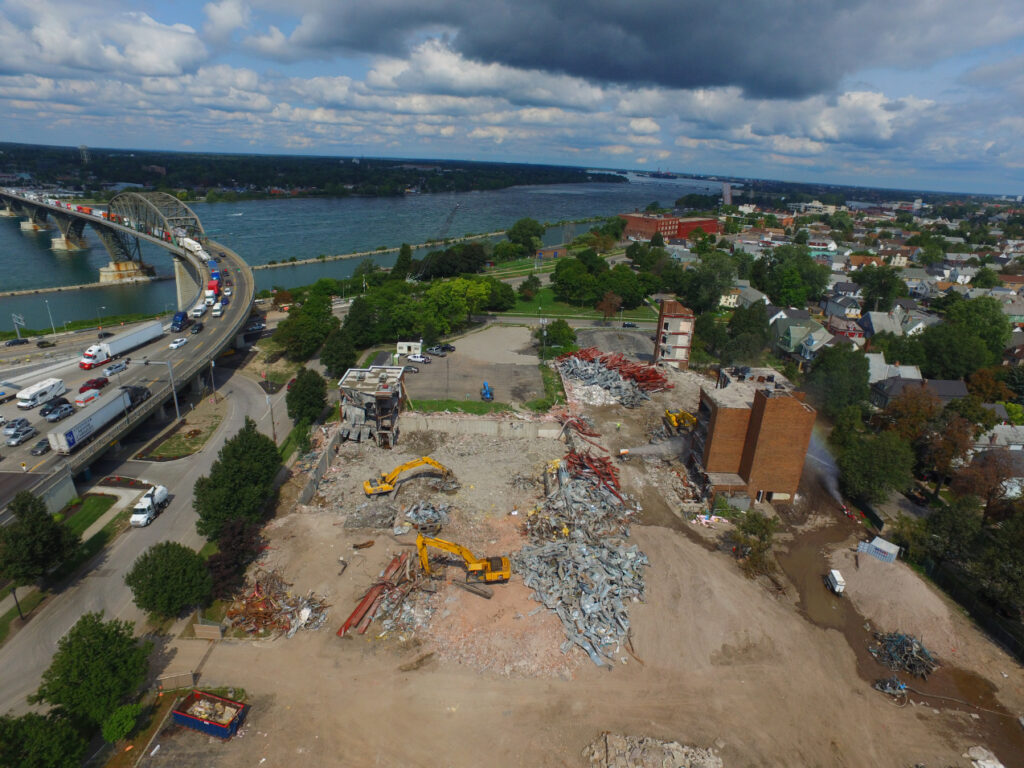
Where is the waste going and who is accountable?
One of the most important aspects of hazardous waste removal to understand is that these elements are nearly always cradle-to-grave, regardless of where they’re being moved to. That’s what makes carefully choosing the right landfill such a critical part of the process, because you maintain liability for the waste even after it’s removed and disposed of.
A key component in maintaining this accountability is a hazardous waste manifest, a chain of custody document that specifies precisely where a waste is moved, when, by whom, and how. The designated “generator of the waste,” truck drivers, and the destination facility managers will all have to sign this.
It’s important to carefully maintain these records not just because you need to literally know where your liabilities lie, but because they are part of maintaining your careful risk files should any questions be raised in the future.
Environmental remediation goes hand-in-hand with industrial demolition, which is why it’s such a crucial component for plant owners, managers, and engineers to understand about the complex demolition process.
We’ve outlined the most common and recurring questions on the topic above, but if you have any further questions or are ready to get your industrial demolition project started, contact us using the form below and we’ll be in touch very soon.
To learn more about the must-know elements of our industrial demolition projects, make sure to check out our comprehensive “Demolition Process” blog here.
And if you’re ready to get your project started, give us a call!

